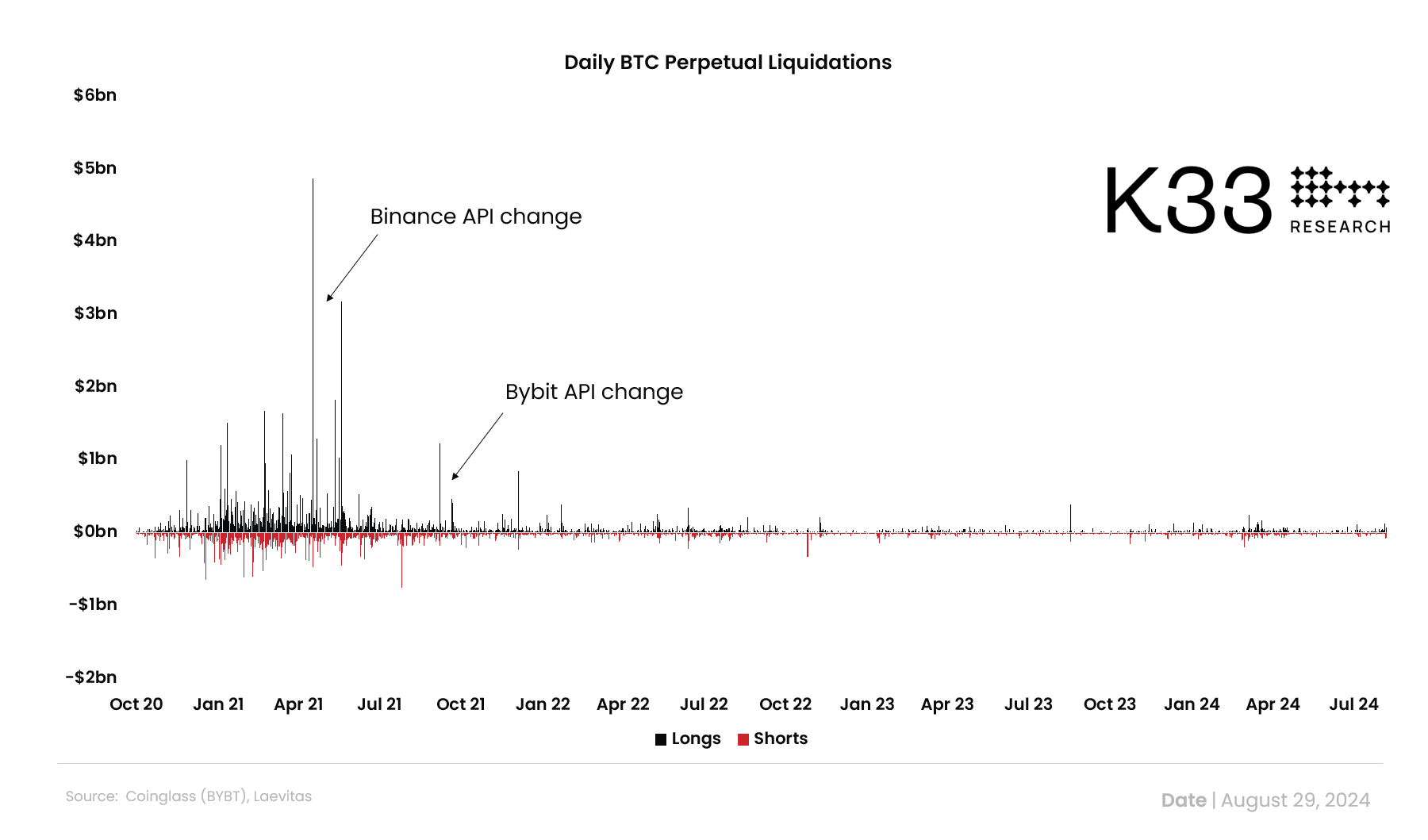Vetle Lunde, a senior analyst at K33 Research, has issued a stark warning regarding the practices of prominent crypto exchanges concerning the authenticity of liquidation data. In a post on X, Lunde outlines how exchanges such as Binance, Bybit, and OKX have systematically modified their data reporting processes in a way that he claims significantly distorts the true scale of market liquidations.
Why Crypto Liquidation Data Is Bogus
The core of Lunde’s argument revolves around changes implemented by these exchanges around mid-2021. For example, both Binance and Bybit adjusted their liquidation WebSocket API to report only one liquidation per second, ostensibly to “provide a ‘fair trading environment’” and “optimize user data stream,” respectively. Similarly, OKX has implemented a cap, restricting the reporting to one order per second per contract.
Lunde explains that this modification in the data stream profoundly impacts the market’s transparency, leading to a scenario where liquidation data, a critical metric used to assess market health and trader behavior, is “wildly underreported.” According to Lunde, this has been the case for the past three years, which has implications not only for traders but also for the broader financial analysis of the crypto market.
Related Reading
Historically, liquidation data has served as a barometer for the market’s leverage levels and has been instrumental in understanding how traders react to sudden price movements and volatility. Accurate liquidation data helps in gauging the market’s risk appetite and in assessing whether a market downturn has effectively purged excessive speculative leverage positions. With this data now being underreported, Lunde suggests that traders and analysts are flying blind.
Lunde speculates on the motives behind these changes, suggesting that they may be driven by a desire to control the narrative around market stability and trader success. He points out that during the first half of 2021, high-profile liquidations were frequent fodder for media and social media discourse, often painting a picture of high risk and volatility in the crypto markets. By limiting the visibility of such events, exchanges might be trying to cultivate a more stable and trader-friendly image to attract and retain users.
“I am guessing it’s a PR choice. In H1 2021, liquidation gore was Twitter, media, and…
Click Here to Read the Full Original Article at NewsBTC…
























